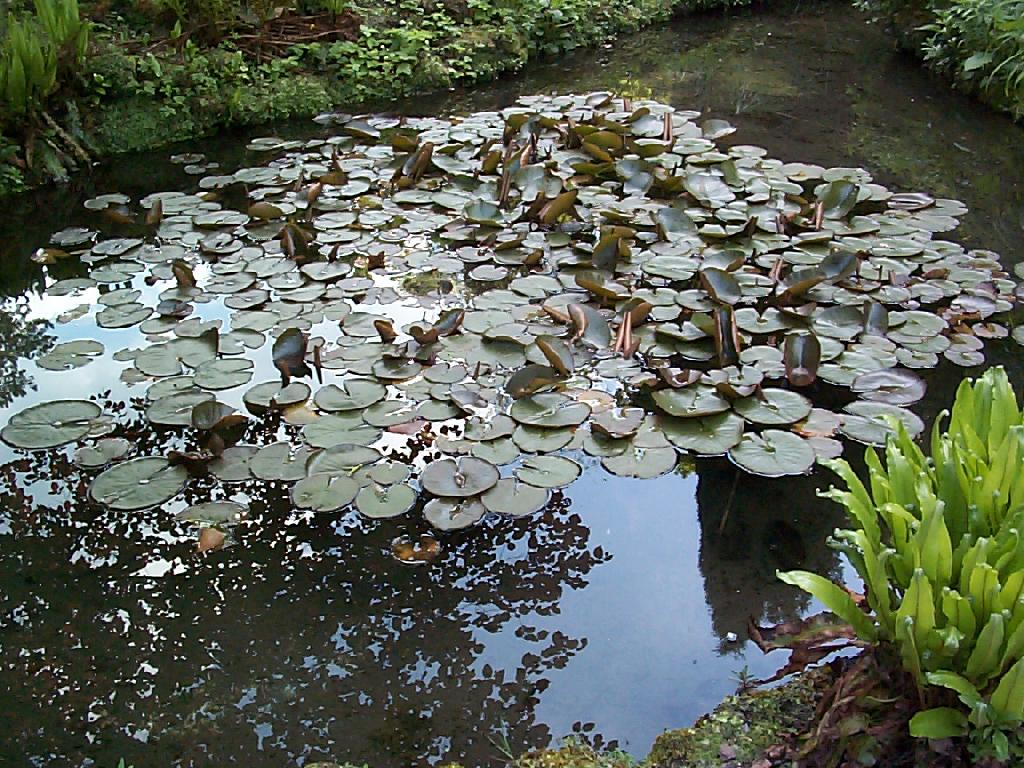Garden ponds lined with a pond liner offer a wide range of pond building designs. Planning is an essential step towards creating the desired look. In this article we offer user friendly tips on what to consider in the planning and build phase.
Garden pond location
The following points should be considered when deciding where to site your pond.
- Near water and power supply – to operate pond pump and filter.
- Accessible for the delivery of all the materials needed for your pond build – and perhaps a small digger to excavate the hole.

- Amount of direct sunlight in mid-summer as this will ultimately affect the water temperature and the life within the pond.
- Avoid extremes of light and shadow. A pond needs at least 6 hours of sunlight in summer. Water lilies need sun to flower and grow. A pond is synonymous with water lilies as they provide shade and shelter for fish or other water-loving creatures.
- Trees can be a menace to ponds particularly in the Autumn when they start to loose their leaves so avoid positioning a pond too near non-evergreen trees and large shrubs. If leaves sink to the bottom of a pond they will, in time turn to sludge which then starts to affect the health of the pond water due to an increase in nutrient levels. The result is an algae build-up.
- Avoid the front garden or anyother area which is easily accessible by children.
Pond size and depth
The best solution for a healthy, hormonious pond is to build is to build the biggest that space and budget will allow.
- From experience, a pond of 20m2 is ideal as it requires less maintenance, easily accommodates water lily growth with out the risk of the pond being caste into a shadow of doom!
- If you are going to accommodate fish, a pond should be dug to a depth of at least 1 meter to prevent water freezing over in winter and to provide shelter for fish.
- Deeper, bigger ponds lose less oxygen during the hot summer periods.
Flexible pond liners
Flat sheet PVC or rubber pond liners are the most popular choice when it comes to making a pond water tight. The reason is that they offer a wide choice in pond design, easy to instore and offers the ability to add on a stream or other additions to the pond.
- Choose a pond liner that offers the following features:
- frost proof
- puncture resistant.
- resists the pressure of growing roots and ground movement
- flexible enough to mould into the contours of a pond design
- guaranteed to last for 20 years or more
- UV resistant and withstands extremes in temperature
- Buy from an authorised aquatic shop or online store. Avoid buying builders rubber liners. A pond liner must be environmentally friendly and not leach chemicals into the water
- Pond liners can be bought in a choice of thickness. Those of 0.85mm or 1mm in thickness are most suitable for larger ponds where the pressure of water baring down on it is much greater
- Sheets of rubber pond liner can be hot bonded together to accommodate large pond design dimmensions.
- When placing an order for a protective underlay and pond liner, you will first need to take exact measurements of your pond build. The calculations are:
- pond liner length required = pond length + 2 x depth + 2 x edge width
- pond width required = pond width + 2 x depth + 2 x edge width (pond edge of around 40 to 50cm is needed to create an overlap to secure the pond liner in place using boulders or your choice of edging material)
Garden pond edging to secure pond liner
The edging is a very important step in a pond build and pond liner installation. Not only does it mark the transition from land to water (or vica versa) but also plays a role in protecting a pond liner from visiting wildlife (and their claws!) and securing it in place. Bare edging doesn’t look natural and exposed pond liner also risks damage by UV rays.
- Use gravel, boulders or other attractive stones where the bank is shallow (to avoid them rolling into the pond)
- Other choices for edging include paving stones
A pond is an attractive addition to any size garden and creates a wonderful opportunity to examine nature close up. When building a pond, make sure it is accessible from at least one side for maintenance purposes, to add or cut back aquatic plants, feed fish or skim-off fallen leaves. Floating aquatic plants will help maintain a healthy pond by keeping algae away – so a worthy addition. When adding plants to your completed pond build, don’t get over enthusiatic – at least a third of the pond surface needs to be free of plant cover to allow for enough sunlight to penetrate the water.
Happy pond building!
Articles offering further assistance in planning and building a pond:





